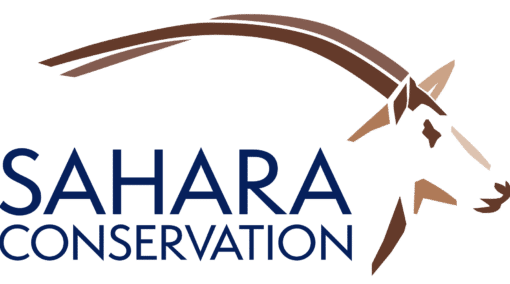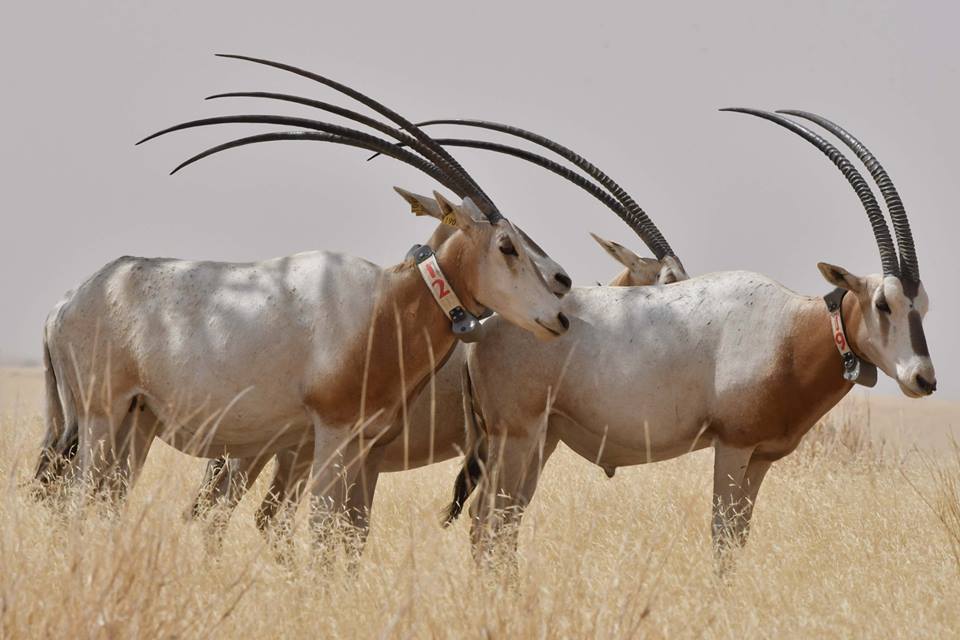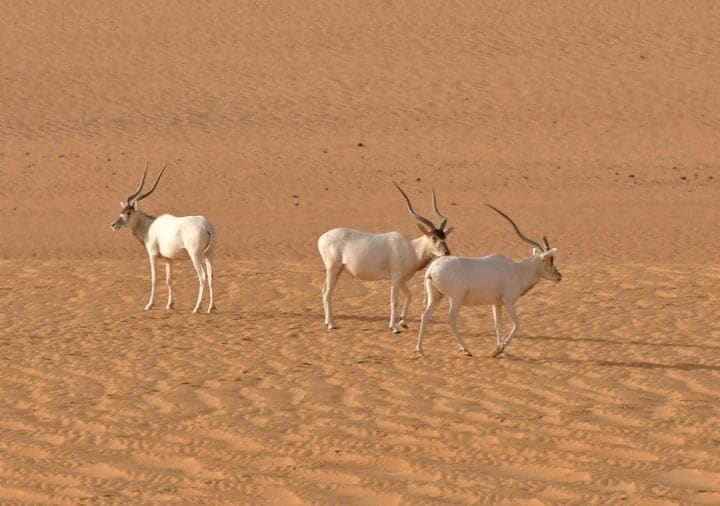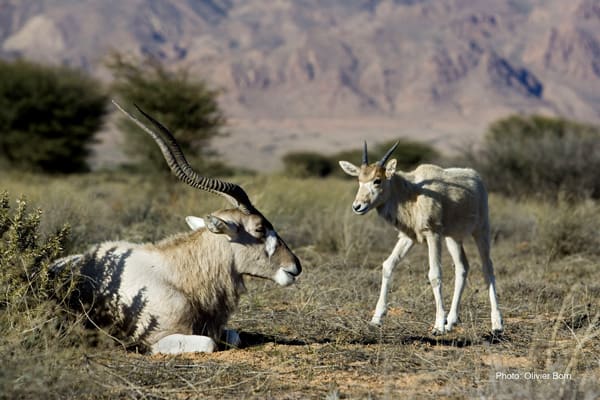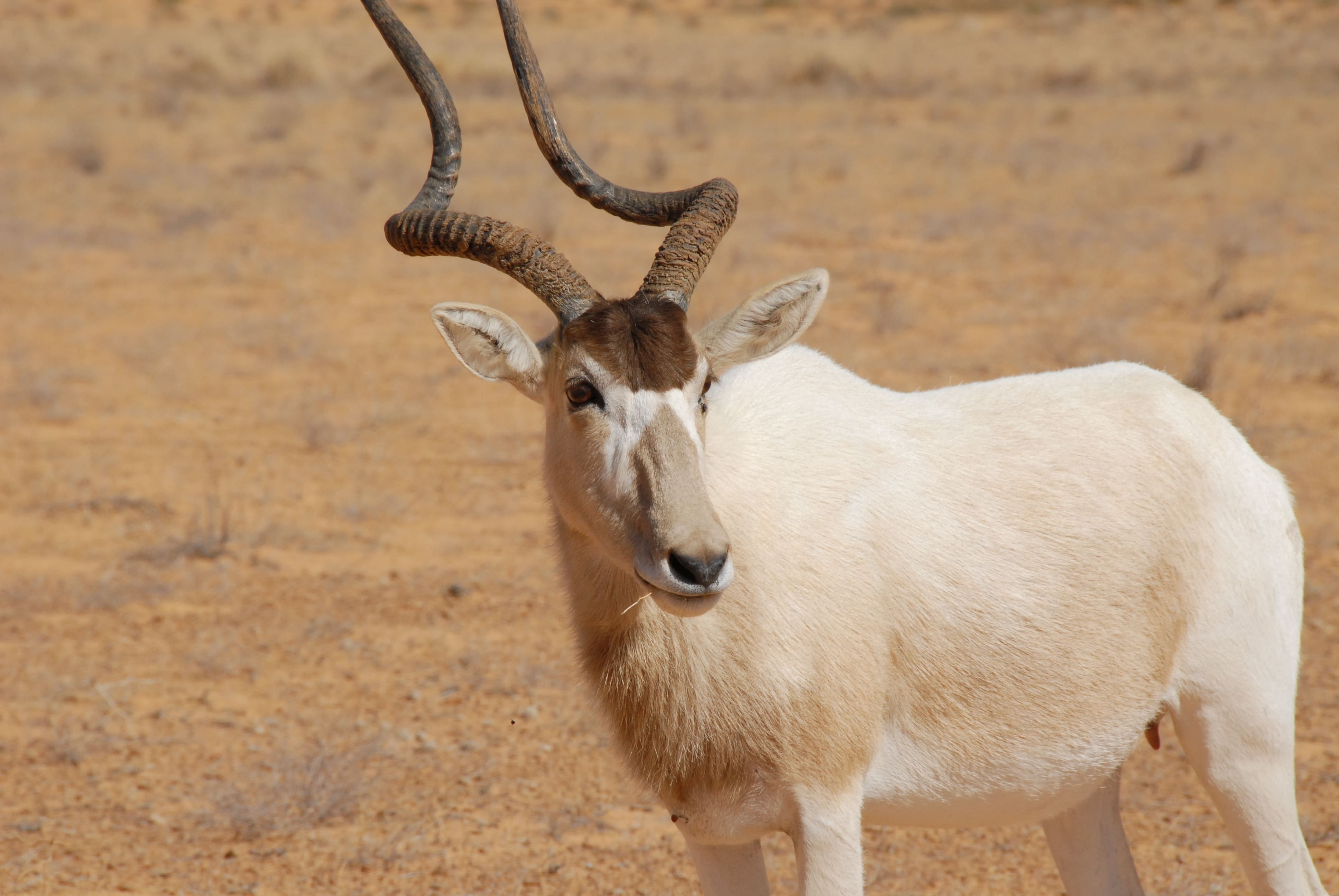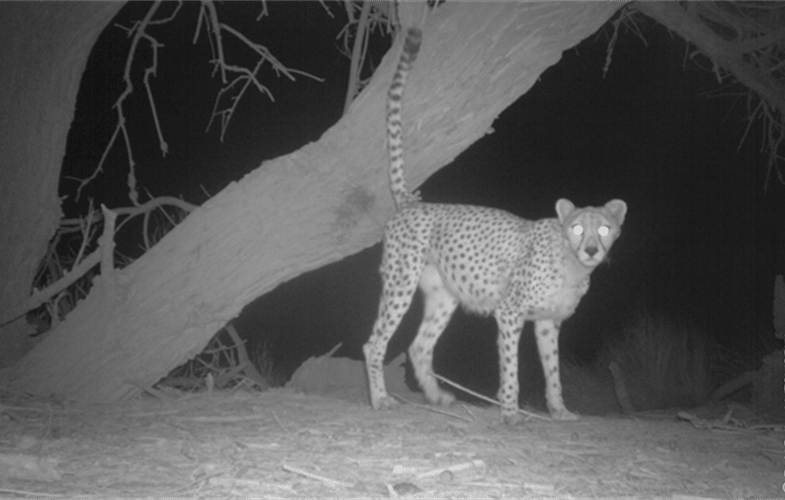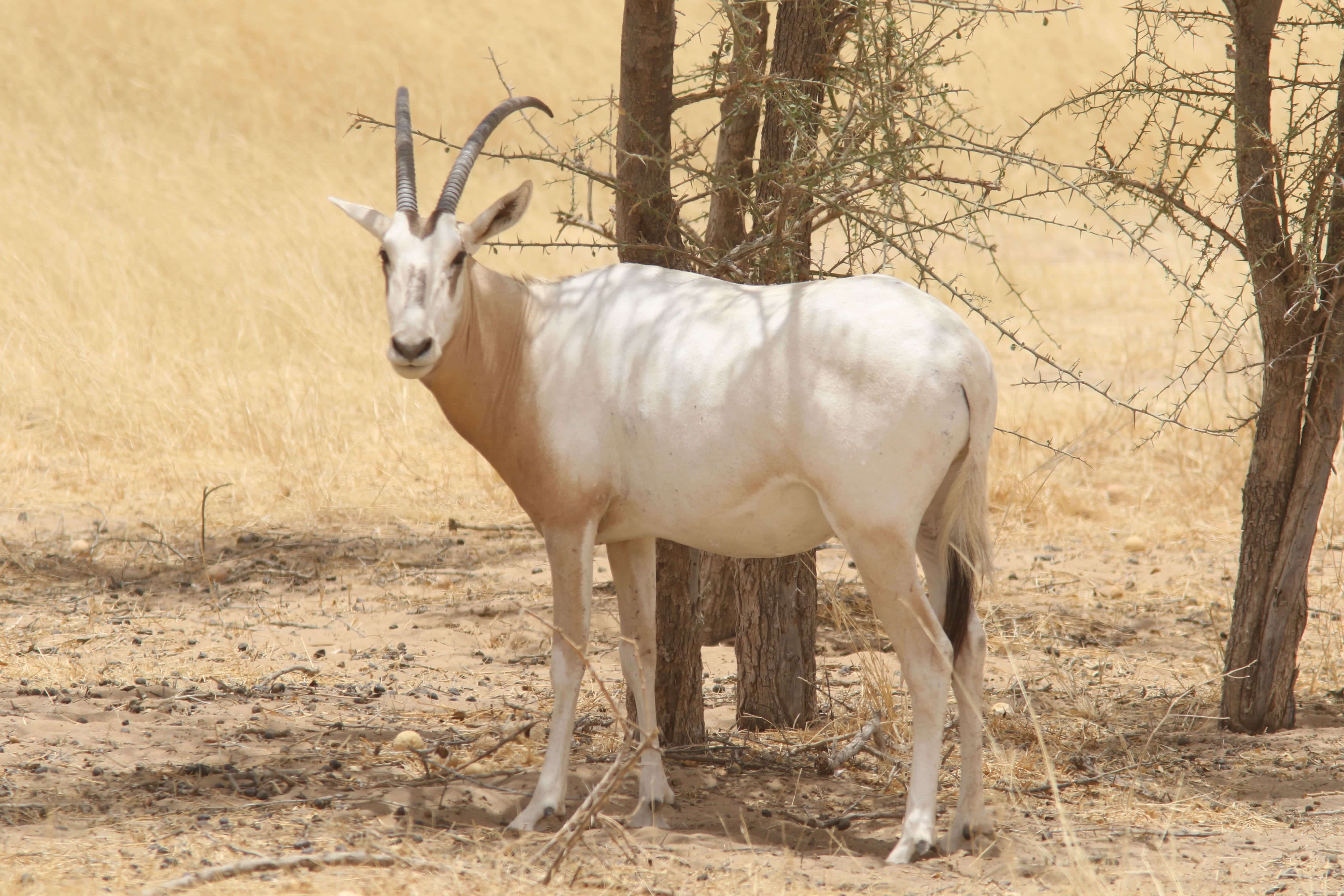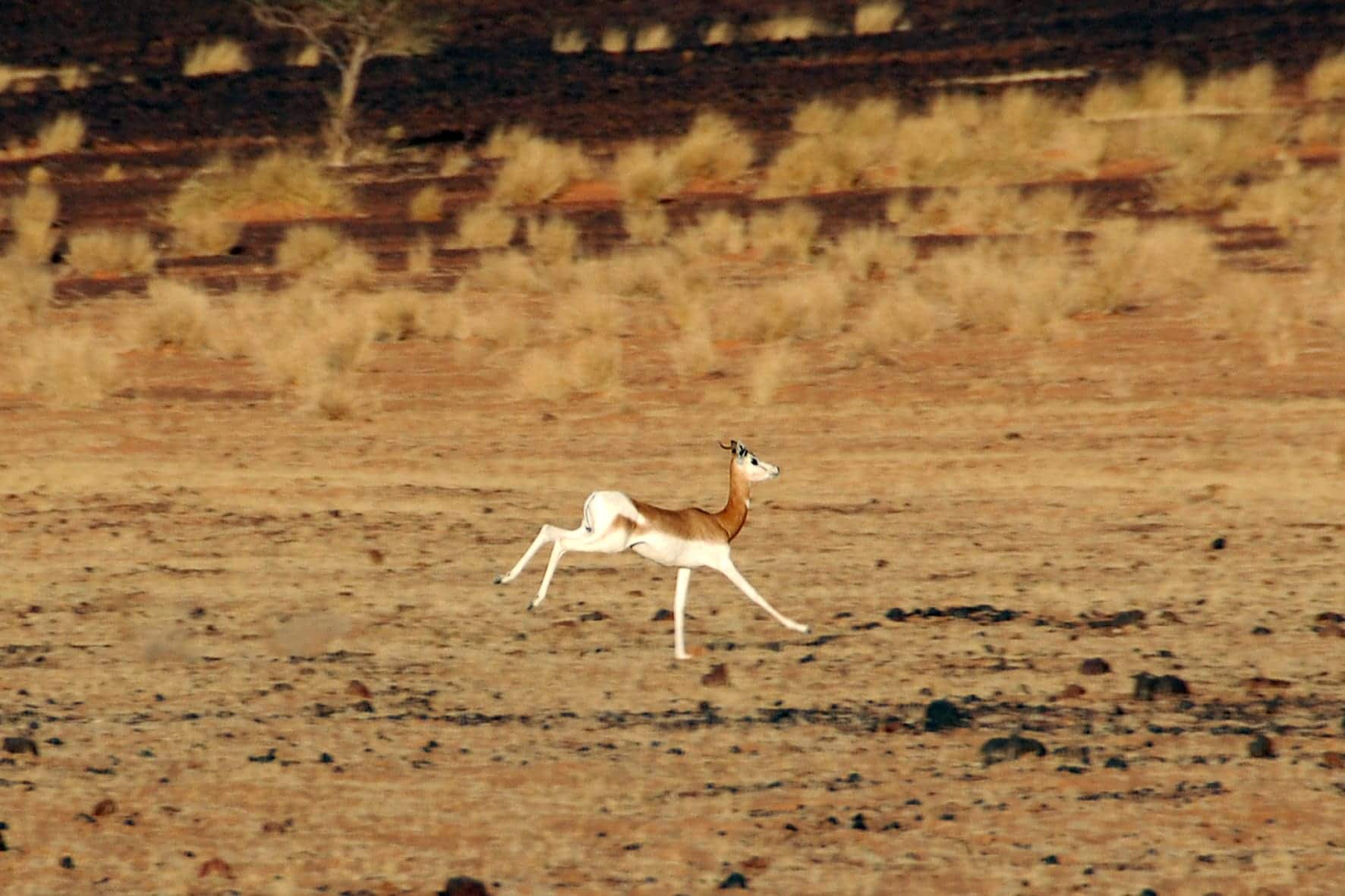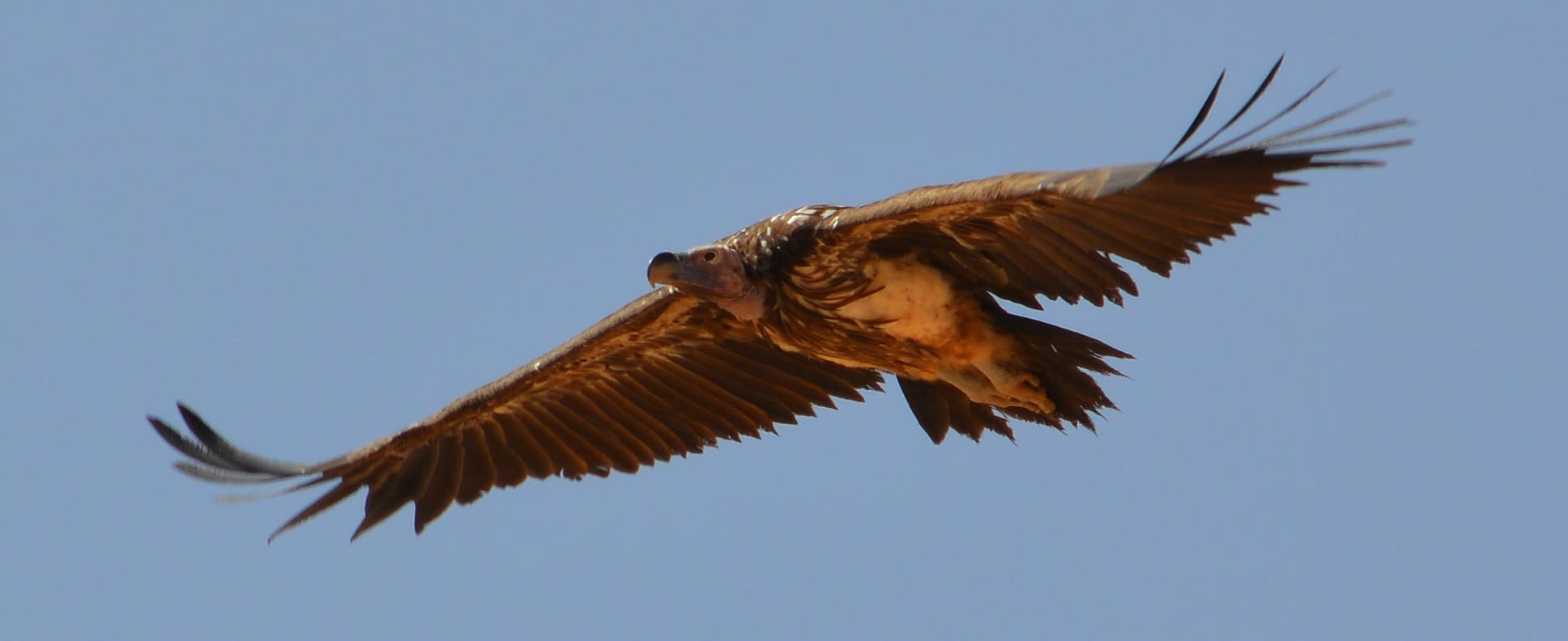September 20, 2016. The addax could be mistaken for a ghostly mirage in the Sahara Desert. But this antelope is perfectly adapted to survive harsh conditions there. Now, it’s on the verge of extinction thanks to poaching and habitat loss.
Author Archive
August 30, 2016. The scimitar-horned oryx has been brought back from extinction in the wilds of Chad thanks to the late Sheikh Zayed and the Abu Dhabi Environment Agency.
August 5, 2016. There are only three Saharan addaxes — corkscrew-horned antelope native to the sandy deserts of eastern Niger and western Chad — left in the wild.
May 5, 2016. Is this the end for the addax (Addax nasomaculatus)? The IUCN reported today that extensive surveys of addax habitat in Niger found just three of these critically endangered antelopes left in the wild. The last animals were located after a 700 kilometer ground search, huddled together in what the IUCN described as a “very nervous” group.
March 2, 2016. LIFE IN THE Sahara is no cakewalk. The baking sun raises temperatures to more than 120 degrees, howling winds conjure up dust devils and sand storms, and years can pass before a drop of rain falls.
January 30, 2015. It’s not easy to get a glimpse of the critically endangered Saharan cheetah (Acinonyx jubatus hecki), the rarest of the six cheetah subspecies. Only about 200 to 250 of these nocturnal cats are thought to survive in remote pockets of Algeria, Niger, Togo, Mali, Benin and Burkina Faso, making them the rarest—and at the same time the most widely distributed—large predator on the planet.
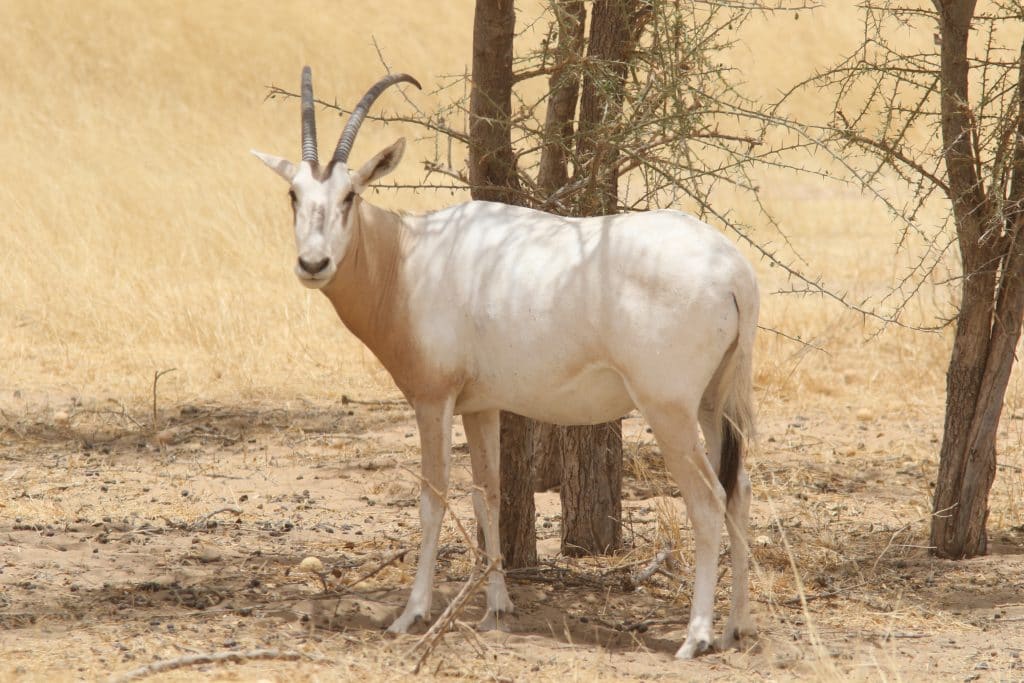
As SCF’s logo, the oryx represents the threats that face desert wildlife but also the hope that one day this magnificent animal will once again roam free on African soil. This once abundant species of antelope occupied the vast, dry, sub-Saharan grasslands but fell prey over time to a lethal combination of overhunting, drought and habitat loss.Thankfully, significant numbers of oryx exist in collections across the world and efforts to restore the species to the wild are underway in Tunisia, Senegal and Morocco. Confined as they are to relatively small fenced protected areas, often situated in atypical or heavily impacted habitat, the oryx has yet to gain its freedom to breed, disperse and reoccupy its historical sub-desert range.
Up until the late 1970s, the oryx and other associated desert animals, such as the dama gazelle, ostrich and addax, prospered in Chad’s Ouadi Rimé-Ouadi Achim Game Reserve, one of the world’s largest protected areas. Regrettably, Chad’s oryx were exterminated during the 1980s largely as a result of civil war in that country. Recent surveys, however, carried out by SCF and Chad’s National Parks and Wildlife Service have underlined the reserve’s enormous potential to host a successful oryx reintroduction project. There is abundant habitat and space to cater for the oryx’s needs and migrations. Initial contacts with the local authorities and the reserve’s inhabitants have also been very encouraging.
With project development in mind, SCF organized a major stakeholder workshop in the Chadian capital of N’Djaména in May this year. Facilitated by IUCN’s Conservation Breeding Specialist Group, the workshop and fieldtrip that preceded it brought together around 40 people from diverse interest groups, including local politicians and representatives from the reserve’s herders associations.
The results were extremely positive, paving the way for detailed project development to take place. The initiative not only has the strong backing of Chad’s Environment ministry but also the President of Chad himself, Mr Idriss Deby Itno. Called in to brief the President on the initiative, SCF’s Chairman, Dr Steve Monfort, and Director, John Newby, were warmly received and were able to share with the President and his senior advisers information on the importance of wildlife conservation in Chad and the hopes for the restoration of the oryx. A keen conservationist, Mr Deby warmly welcomed the initiative, promising his personal support and that of his government.
Over the coming months, SCF and its partners will be working closely with the Chadian authorities to develop a full project proposal that will combine oryx reintroduction with protected area management in a mutually reinforcing way. Starting from a core protection zone of several thousand square kilometres, oryx will be brought in, acclimatized, released and monitored. Over time, further animals will be released and secondary sites developed to create a network of recovery points within the reserve. Partnerships will be developed with the local communities and agencies active in the area’s developmentto ensure that win-win solutions can be found in developing the reserve’s space and resources for the mutual benefit of both people and wildlife.
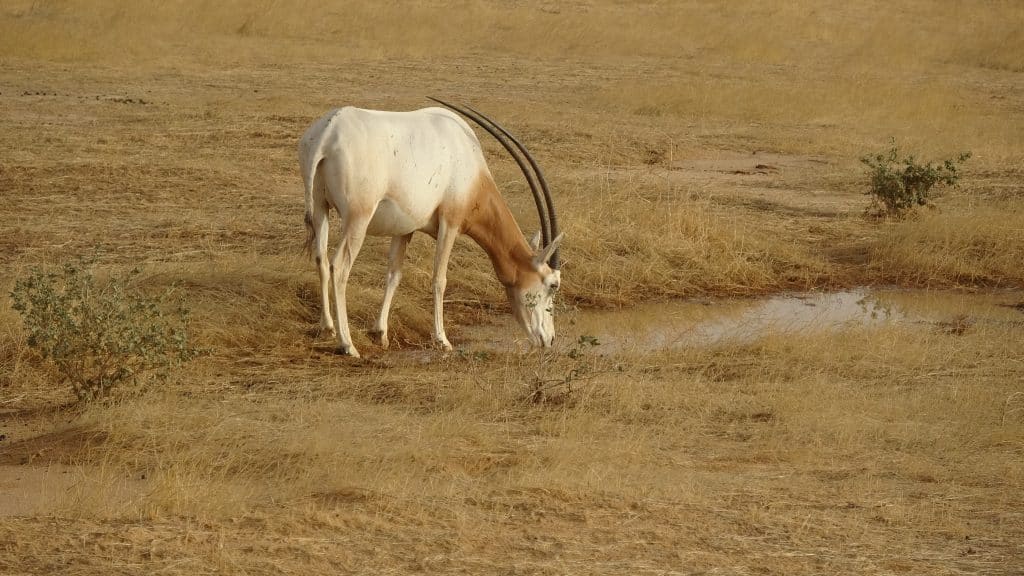
The oryx reintroduction project is one of the most ambitious ever undertaken by SCF and we would like to thank the following organizations for their support, generosity and counsel in making this possible: HH Sheikh Mohammed bin Zayed Al Nahyan, Addax & Oryx Foundation, Al Ain Zoo & Aquarium, Convention on Migratory Species, Emirates Center for Wildlife Propagation, Environment Agency of Abu Dhabi, Fossil Rim Wildlife Center, International Fund for Houbara Conservation, IUCN Conservation Breeding Specialist Group, Marwell Wildlife, Mohammed bin Zayed Species Conservation Fund, Noé Conservation, Oxford University WildCRU, Royal Belgian Institute of Natural Resources, Saint Louis Zoo, Smithsonian Conservation Biology Institute, Zoological Society of London.
You will no doubt have heard the Sahel region of Africa has yet again been hit with erratic and inadequate rainfall. This has led to failed harvests and poorly developed grazing. An estimated 13 million people are affected with over 6 million of these in Niger alone. Here, food shortages are estimated to be in the order of 800,000 metric tonnes. As food runs out prices soar beyond the reach of the chronically poor. In the regions in which SCF works, those of Agadez, Zinder and Diffa, several thousand children are already suffering from severe malnutrition and deaths are being recorded on a daily basis. Under the best case scenario, the next harvest is at least 5 months away.

Lots of statistics, I know, but the reality is these statistics have names; names like Aysha, Mamadou and Bintou. Statistics that are hungry, statistics that hurt, statistics that cry. Statistics that struggle for breath and statistics that will die for want of food.
And while the Niger government and the community are doing their best to get away from it. We can help. With an initial donation of $ 5,000 from St. Louis Zoo, SCF has matched this with a further $ 5,000. Our initial target is to double the price of food for children. SCF will partner with Save The Children to ensure that money is used most effectively.
According to Justin Forsyth, Save The Children’s Chief Executive, who has just returned from Niger, where some food is still available but not affordable. “… we should urgently distribute small amounts of cash to the poorest families so that they can eat”. He went on to say “We need to pay particular attention to helping the under-fives, whose bodies succumb faster to lack of food.” It costs less to stop children to get back to the brink of death- £ 5 ($ 8) Child’s diet for a month, compared with £ 80 ($ 108) to treat a case of severe malnutrition. “
SCF is doing its best to implement an effective and responsible conservation program in Niger. And while we rightly focus our attention on endangered species, we never fail to recognize the importance of building meaningful and honest relationships with the people. Beyond providing relief food, we have a longer program of support that includes health care and vaccinations against diseases like tetanus and measles, education and school canteens for the children of nomad families, and the provision of environmentally-sound and reliable sources of water.
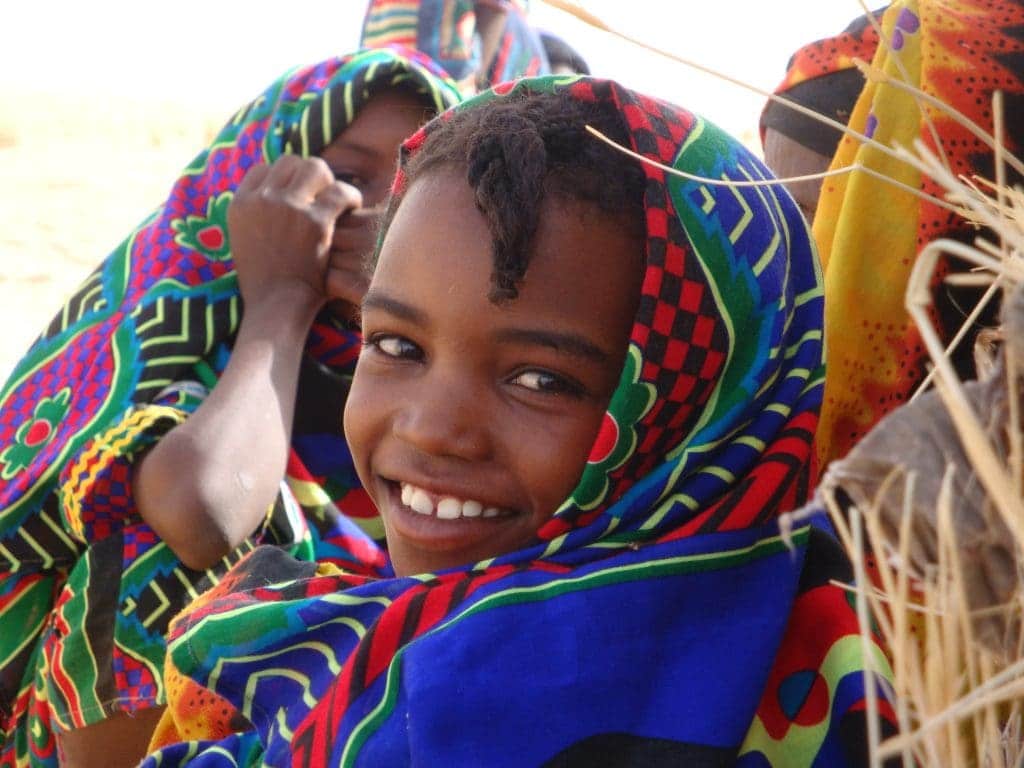
Please help SCF reach our $ 20,000. Donations can be made on-line via our secure Donation page or by contacting our Treasurer, Karen Sausman .
You would not walk away from a hungry friend, would you?
Follow us also on Facebook
March 7, 2012. Yesterday, the Niger government formally created the Termit and Tin Toumma National Nature and Cultural Reserve in the Sahara Desert, reports the Sahara Conservation Fund. The reserve, now one of the largest in Africa, expands existing protected areas to 100,000 square kilometers (38,610 square miles), an area bigger than Hungary and nearly twice the size of Costa Rica.
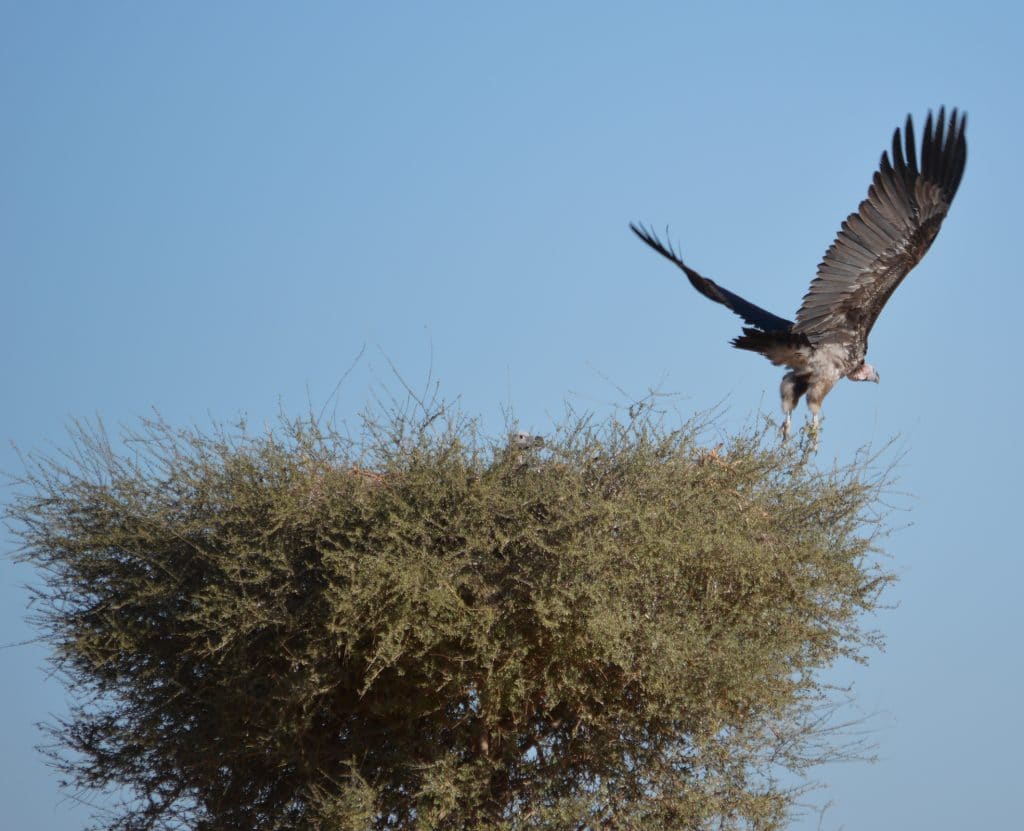
It will not have escaped anyone’s attention that North Africa is going through significant turmoil at the moment. Turbulence that often dramatically upsets society and which also impacts heavily on our ability to carry out our conservation mission.
I was recently asked whether we would be abandoning projects as a result of the unrest. “No way” I said “we will in fact be redoubling efforts to stay in touch with the new realities emerging”. It is in the crucible of conflict that vital lessons may be learned. Take Tunisia, for example. During the early days of unrest there, several national parks were ransacked and livestock introduced to their verdant interiors. The premise that their role and value as national assets, guaranteed for all Tunisians by the state, was clearly not a universally shared concept. The protected areas were seen as belonging to the old regime, underlining the need to find ways of creating parks and reserves with stronger public support, as well as fostering the idea that they are there for the benefit of all. I would be the first to recognize this is far easier said than done but one thing I am sure of is that without active engagement and a high degree of loyalty through thick and thin, lasting solutions will never be found. For sure, we are not taking any silly risks and are carefully monitoring situations before sending staff into the field but we do intend to keep on working as best we can. Our ability to do this resides both in the way we have gone about developing and implementing our projects and in the steadfast and generous support from our donors and partners. Our program and projects underline and illustrate the many reasons why we should not withdraw but on the contrary, redouble our efforts. Work underway on the world’s biggest bird, the North African ostrich, the vultures and bustards of the Sahel, the dama gazelles of Chad and the addax of Niger all bring hope and encouragement.
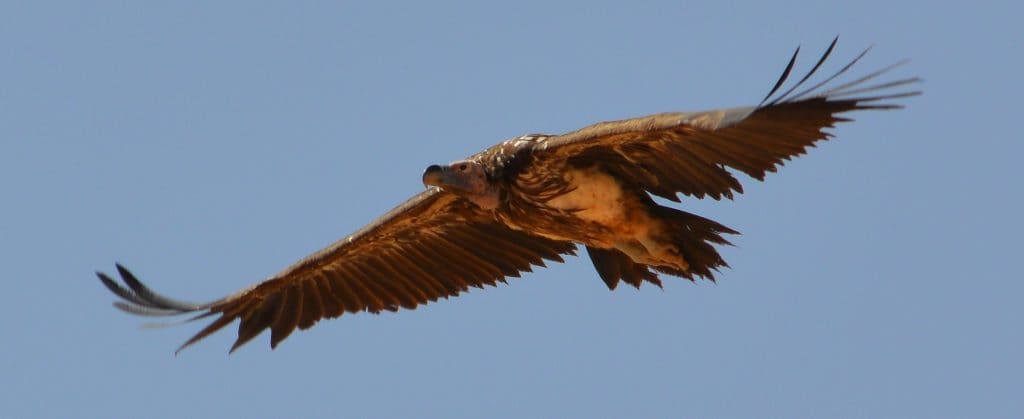
Just as in flight, that little yellow fasten seatbelts sign will surely enough go off one day and when it does we will be well placed to pursue our mission with vigour.
John Newby
June 2011
